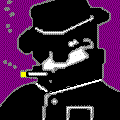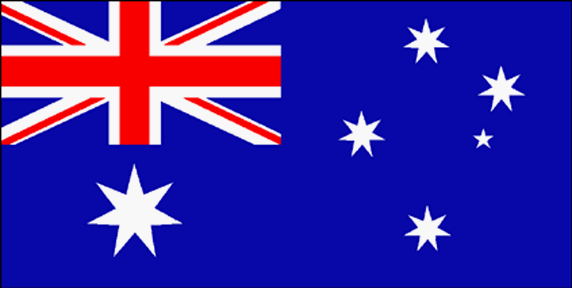





The AIB operated a group called the Coast Watchers, whose mission it was to fight off Japanese influence in New Guinea, Solomon Islands and the Philippines. The Coast Watchers, would watch and report Japanese movements in their area. They would also drop behind enemy lines to collect intelligence, and sabotage Japanese activities. The AIB continued its work until the end of World War II, when it was disbanded and responsibility for Australian domestic security became the responsibility of the Commonwealth Investigation Service (CIS).
Some in the Australian Government and military felt there was a need for a Australian post-war intelligence service. As recent intelligence historians have discovered much of that impetus for the establishment of ASIO came from the American and British governments. Until comparatively recently, it was not known that it stemmed from the efforts of an elite code-breaking team that broke NKVD, later the KGB codes. This decoding, now known as VENONA, indicated that the NKVD was running a spy ring in the Australian government and high level agents in the Public Service. The critical issue in what had become the 'atomic age' with the detonation of the first Soviet A-bomb was that the major powers could not trust Australia with their secrets.
The situation was sufficiently serious that the Australian Prime Minister Ben Chifley asked Clement Attlee, his British counterpart for assistance and advice. Attlee despatched a team from the British MI5, led by its Director-General Sir Percy Sillitoe to survey the Australian situation and his report was that Australia needed to establish a national security organization.
In 1949, ASIO was established under its first Director-General Justice Reed from South Australia but with Headquarters in Sydney. The following year, Brigadier Sir Charles Chambers Fowell Spry, the former Head of Australian Military Intelligence (known as "silent Charles") became Director-General and the Headquarters moved to Melbourne. However, the establishment of ASIO was thus a political decision that was by no means popular with all of the government of the day.
Taking men, records and resources from the now defunct AIB and the CIS, they began to create their security/intelligence service. Concomitantly, the organization was divided into two sections, the first was the ASIS (Australian Secret Intelligence Service), responsible for the garnering of intelligence, and for foreign operations abroad which was made responsible to the Ministry for External Affairs.
The other section was responsible for counter-security and counter-intelligence. In April of 1954, Vladimir Petrov, a Soviet MVD (predecessor) legal intelligence officer, also the acting head of Station, based at the Embassy in Canberra, was recalled to the Soviet Union for "Consultations". Petrov knew that in light of Stalin's death the previous year, he would be purged, had to make a split second decision, return to Moscow and almost certainly face execution, or defect. He chose the latter. Packing whatever intelligence he could fit into his briefcase, he left the embassy and defected, leaving his wife to follow later. When the KGB realized that Petrov had defected they had Mrs. Petrov seized in the hopes that holding her hostage would reduce Vladimir's defection and revelations to the West.
The KGB operatives in the embassy then received instruction from Moscow, they were to return to Moscow with Mrs. Petrov at all costs, and to use force if necessary. ASIO intelligence officers knew that the plane taking Mrs. Petrov back to the U.S.S.R. would have to land in Darwin on the north coast of Australia, before continuing on across the China Sea. When the plane landed in Darwin, ASIO ordered the KGB operatives and Mrs. Petrov off the plane. The ASIO officers then ordered them inside where in front of the media Mrs. Petrov was handed a phone. Her husband was on the other end and told her to ask for political asylum. "I do not want to return to Moscow" she announced. The guards, who had been ordered to return with her, and realizing what was happening, seized Mrs. Petrov. The ASIO field officers intervened, and ordered the KGB intelligence officers out of the country, without Mrs. Petrov, while all the entire time the cameras were rolling.
Suffice it to say, for the KGB, it was a public relations nightmare. To add insult to injury, the Petrovs had been keeping copies of Vladimir's reports to Moscow. Petrov subsequently named two officials in the Australian Department of External Affairs as Soviet moles. He further divulged an extensive spy network that was interested in Australia's uranium production and provided information for many years. It was a major coup for ASIO but clouded by politics. The Petrovs were then given new identities, and wrote a book about their experiences. The Soviets ended relations with the Australians, leaving the care of their embassy to the Swiss.
In 1959, ASIO was partaking in Operation Mole with MI-5. The Soviets were talking about returning to Canberra. So with the help of MI-5, the Australians bugged the soon to be Soviet embassy. ASIO then waited a year to activate the listening devices in case the Soviets were monitoring the Embassy for radio waves in the first few months of their reoccupation. The operation was an abysmal failure. Every sound was recorded but there was only one hitch. The person being monitored never said a word.
In 1983, ASIO exposed soviet legal Valery Ivanov and expelled him. It was learned he had been trying to recruit agents of influence, one of whom was a former National Secretary of the Labor Party, David Combe, friend to Prime Minister Robert Hawke. Newly in office, concerned about the extent of Combe's contacts and fearful of a scandal, Hawke ordered the Labor party to disassociate themselves from Combe. The latter made the most of his press, electronic media and political contacts to run a highly successful campaign to besmirch ASIO.
The same year, the Australian Secret Intelligence Service (ASIS) decided to run a mock hostage rescue operation. They failed to inform either the hotel or the local State Police, that they were running the operation. When ASIS intelligence officers stormed the hotel, they roughed up the hotel manager, and scared the guests. When the police arrived, they arrested five ASIS officers, all of whom were drunk. In light of these fiascoes, the government set up a Royal Commission to look into the Australia's Security and Intelligence agencies and their activities. As a result, all future major intelligence operations required the consent of the Prime Minister, and a cabinet level committee was formed to oversee all intelligence activities: the equivalent of the U.S. Senate committee on intelligence oversight.
In 1990, it was learned that the ASIS, along with the help of 30 NSA technicians, had bugged the Chinese Embassy in Canberra. The story had originally been picked up by an Australian newspaper but ASIS asked them to sit on it. Shortly thereafter, the Associated Press also picked up the story and ASIS also got them to sit on the story. But somehow, the story made its way to Time magazine, where it was published, compromising the operation.
